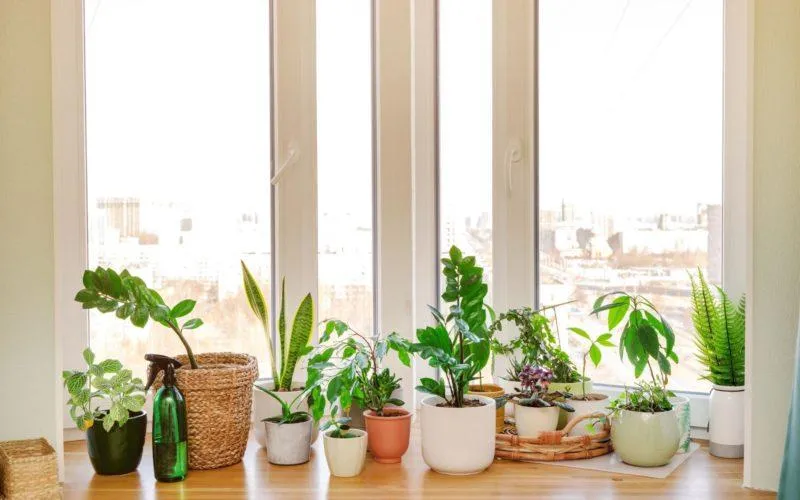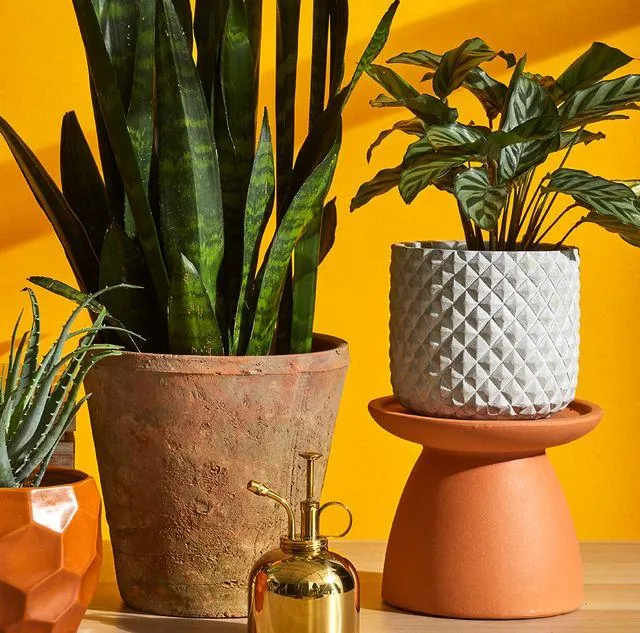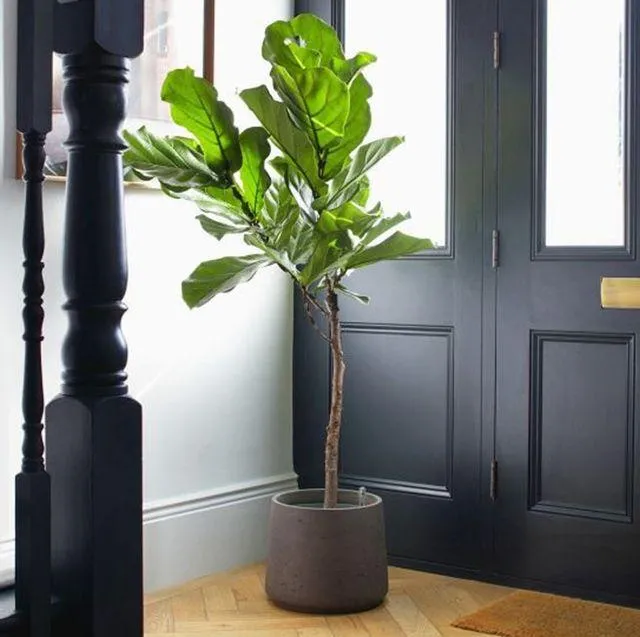All You Need to Know About Indoor Trees and Plants
Whether you’re looking to add some greenery and nature to your home or simply want to spruce up your indoor décor, indoor trees and plants are a great option. But with so many varieties to choose from, it can feel overwhelming deciding what works best for your space. In this article, I’ll cover the most common user intentions when searching for “indoor trees plants” and provide detailed answers and recommendations.
What Types of Trees and Plants Thrive Indoors?
- Low light plants – If you don’t get much natural sunlight in your home, go for succulents, snake plants, pothos or peace lilies which can tolerate lower light conditions. These plants are also very low maintenance.
- Tropical trees – Figs, dracaenas, rubber trees and palms like date and kentia palms thrive in warm indoor spaces and provide a lush, jungle-like vibe. They prefer bright, indirect light.
- Foliage plants – Ferns, spider plants, Chinese evergreens and english ivy are beautiful leafy options that give depth and texture. They adapt well to both low and medium light levels.
- Flowers – Popular indoor blooming plants include orchids, African violets, blooming cacti and succulents. Most flowers need medium to high light to bloom consistently.
How Do I Care for Indoor Trees and Plants?
Proper care is essential to keep your indoor greens healthy. Here are some tips:
Watering: Allow soil to dry out partly between waterings. Overwatering is common and can cause root rot. Check soil moisture with your finger before watering.
Light: Place plants in bright, indirect light but away from direct sun or they may sunburn. Rotate plants to encourage even growth.
Fertilizing: Use diluted liquid fertilizer every 2-4 weeks during active growth periods. Repot annually in early spring with fresh potting mix.
Pruning: Prune off any dried or damaged foliage, stems or flower stalks to maintain an attractive shape. Some may need staking for support.
Pests: Check regularly for signs of pests like aphids, scale or spider mites. Isolate and treat with natural remedies if spotted.
With some trial and error, you’ll learn each plant’s specific needs to keep any indoor tree or plant happy for many years.

What Are Some Popular Indoor Tree Options?
Here are a few top indoor tree choices to consider for homes and offices:
- Ficus Trees: Low light benjamina and robusta ficus varieties are tough, easy to care for and provide vertical height. Their braided trunk designs add visual appeal.
- Dwarf Umbrella Trees: Compact and dense-leaved, these make an excellent tabletop tree for small spaces. With a similar look to larger ficus but easier to manage size-wise.
- Dracaena: Striking red-edged, green or gold-striped dracaena add beauty to any room. Very tolerant of low light and neglect.
- Potted Rubber Plant: Classic office tree with deeply lobed, shiny dark leaves on rosette-like leaf stems. Low maintenance and hardy.
- Money Tree: Not exactly a tree but braided trunk varieties look just like miniature palms. An auspicious gift plant that brings luck and prosperity.
With their architectural forms and tropical aesthetics, any of these low-fuss indoor trees makes a great long-lasting statement.
What Size and Style of Pot Works Best?
Pot size and shape are an important factor in cultivating a thriving indoor tree or plant. As a general rule:
– Use a pot approximately 2-3 inches larger diameter than the plant’s root ball when repotting for growth room.
– Stylistically, classic nursery pots or earthy terracotta are safe bets. glazed or metallic pots also work well for bolder looks.
– For small spaces, puck or globe shaped pots maximize planting area within tight footprints. Hanging baskets save floor space too.
– Consider the plant’s height fully grown. Dwarf varieties suit tabletops while ficus prefer freestanding floor pots.
– You can get creative combining multiple indoor trees in large ornamental planters for a curated junglescape vibe too. Just ensure adequate drainage.

With the right sized vessel, even limited indoor gardeners can nurture statement houseplants that enhance any room’s aesthetic for years to come!
What Other Tips Can You Share?
Here are some additional tips from my experience as an indoor plant dad:
When supplementing natural light, Go for quality grow lamps not harsh LEDs which can damage more delicate exotic specimens over time. I’ve basically fried a calathea this way before realizing.
Dust leaves occasionally if your home is dusty. I use a soft dry paintbrush to brush off debris and support transpiration without damaging foliage.
Speaking of dust, make sure to choose a spot out of high-traffic areas where fallen leaves won’t collect too much household grime over time. Basically saved one fern from a sticky demise this way!
In terms of décor, group plants together for visual impact instead of singling them out as accents. Unless it’s like an amazing monstera, ya feel?
Lastly, don’t get too attached to any one plant. Sh!t happens sometimes and not every species thrives in every home. Be ready to swap out unwieldy specimens before they make you hate indoor gardening, fam!
With a little trial and error based on these tips, even brown thumbs can keep indoor trees and plants happy for years to come.

I hope this covered just about any question a reader may have after searching “indoor trees plants” online! Please let me know if any other topics need clarification. Happy planting!
Indoor Plant Care Tips
| Plant | Light Needs | Watering | Care Tips |
|---|---|---|---|
| Philodendron | Low to Medium | Allow soil to dry slightly between waterings | Tolerates low light. Prune as needed to keep bushy. |
| Pothos | Low to Bright Indirect | Let soil dry out between waterings | Vine readily. Cut and propagate in water. |
| Snake Plant | Low to Bright Indirect | Let soil dry out completely between waterings | Very tolerant of neglect. Prune off pups to propagate. |
| Chinese Evergreen | Medium to Bright Indirect | Water when top inch of soil is dry | Keep humidity high. Prune as needed to shape plant. |
| Peace Lily | Medium to Bright Indirect | Let top inch of soil dry before watering | Blooms when happy. Toxic to pets if eaten. |
FAQ
-
What kind of indoor trees are best for a home with low light?
Some good options that don’t need a ton of sunshine include ZZ plant, snake plant, and peace lily. They can survive with just a few hours of indirect light every day. You might also consider a ficus or pothos plant – they’re kinda hard to mess up!
-
How often do you need to water indoor trees?
It really depends on the type of plant. As a basic rule, check the soil daily – if the top inch or so is dry, it’s time to water. For some plants like snake plants, you can go longer between waterings. Bamboo palm and fiddle leaf fig may need water every few days. Maybe keep a little notebook to track what works best for each plant – it could save ’em!
-
What kind of light do different indoor trees prefer?
Some trees like lots of sunlight while others do better in low light. For example, a fiddle leaf fig will be stunning in a bright window but a ZZ plant would basically die! It pays to do some research on each plant’s light needs. You could even try grow lights if your space is darker than what a plant demands. At the same time, don’t put anything in direct sun – that might scorch the leaves.
-
How do you know if an indoor tree is getting enough sun?
Signs that a plant may be enjoying the amount of light could be new, healthy leaves and long, not leggy growth. On the other hand, skinny stretched out branches or mostly wilted leaves may mean it’s not getting sufficient sunshine. You might also inspect for yellowing of the foliage. I wonder, could certain plant phone apps tell you roughly how much light an area gets? That could help decide where to spot your greenery.
-
What should I do if an indoor tree gets dry or overwatered?
For dry soil, give it a nice long watering and hopefully the plant will perk up soon after. Overwatered plants can be trickier – you may need to remove it from the wet potting mix and let the roots dry out some before repotting in fresh soil. It’s also a good idea to check the drainage holes aren’t blocked. Perhaps put some rocks or shards in the bottom to allow excess water to easily escape. With some TLC, the tree ought to recover quickly enough.
-
How do I know if an indoor tree needs fertilizer?
Keep an eye out for slower growth, yellowed leaves, or browning tips – those can mean the plant is lacking nutrients. Most trees will be fine for several months without food. You might ask an expert at the garden store for their recommendations. Some prefer organic options like compost tea, but admittedly, those little dissolvable spikes work well and are so easy. In the end, we can only do our best – the rest is up to nature!
-
What are some low maintenance indoor trees?
For those of us with busy schedules and black thumbs, consider a bamboo palm, spider plant, or snake plant. They’re virtually impossible to mess up and seem to grow despite our mistakes! The ZZ plant also comes highly suggested – it can go weeks without a drink. Personally, my pothos is sort of amazing – I forget about it for ages but it just keeps thriving. So in summary, those types might work for folks who tend to, uh, kill other plants.

